Back to the Fungi page and Home page
Fungi at Hazel Heads Woods September 25th 2021
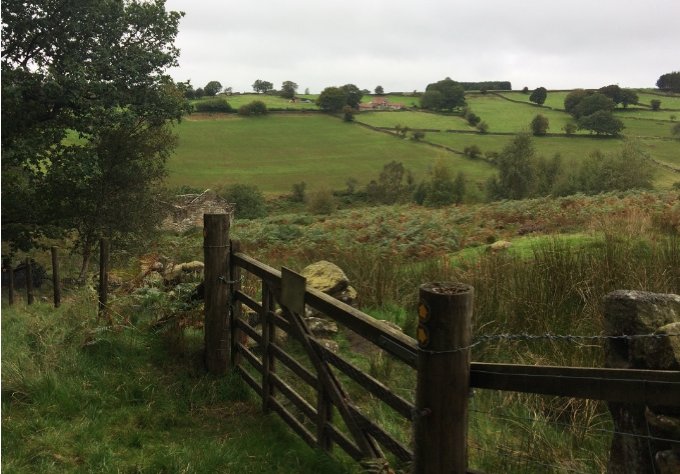
Just 7 of us met at Hazel Heads, north of Hawnby for a circular walk through a patchwork of habitats. We started across a bit of rough grassland with a mixture of felled trees, followed by a track through mature planted conifers and then back through a lovely bit of oak and birch woodland on a slope above Blow Gill and an interesting copse of mature Beech trees.
We identified 36 species (see list below), nothing outstanding, but a good variety of specimens. It was good to find Hygrophorus hypothejus – the Herald of Winter, with its slimy olive brownish cap and bright lemon yellow gills, as well as the little Polyporus leptocephalus – the Blackfoot Polypore. The latter emerges straight out of the bark on fallen branches and has a flat creamish-yellow cap, cream pores and a short stumpy, entirely black, stipe. Another fungus emerging straight out of wood was Pluteus cervinus – the Deer Shield, with its slightly crinkled brownish cap and pinkish gills. Under the microscope this has the most amazing horned cells on the gill edge called cystidia. They make it unmistakeable.
We had hoped to see Cortinarius sanguineus – the Blood Red Webcap, that we found last year under the Oaks, but they were simply not around this year. Fungi are fickle things, which is what keeps us looking!
Here are some of the more interesting photos taken on the day.
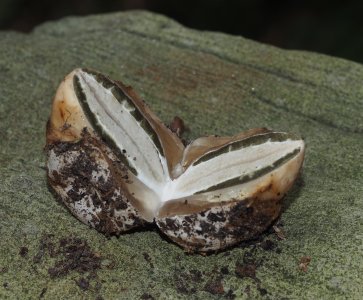 Stinkhorn “egg” |
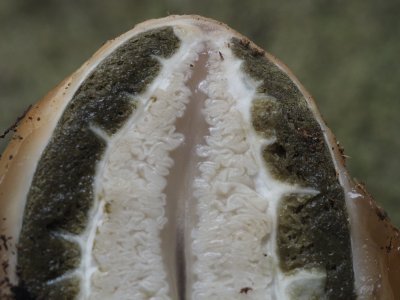 Stinkhorn “egg” detail |
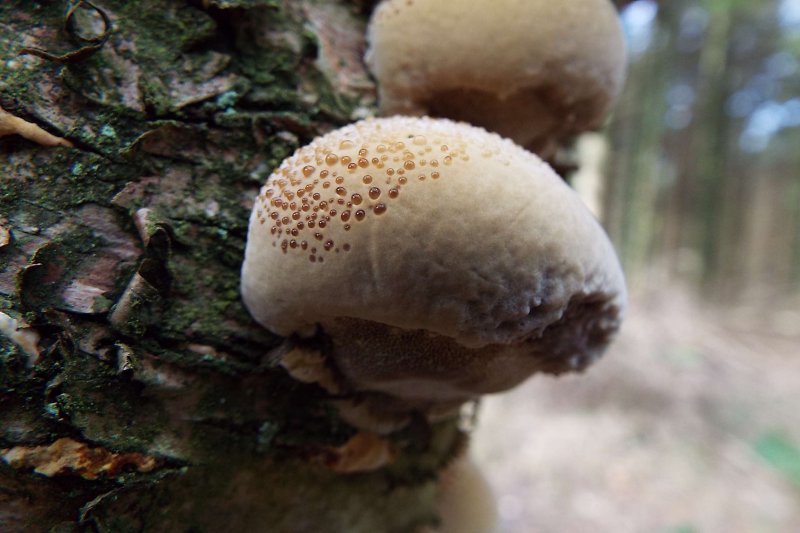
“Weeping” bracket fungus on birch
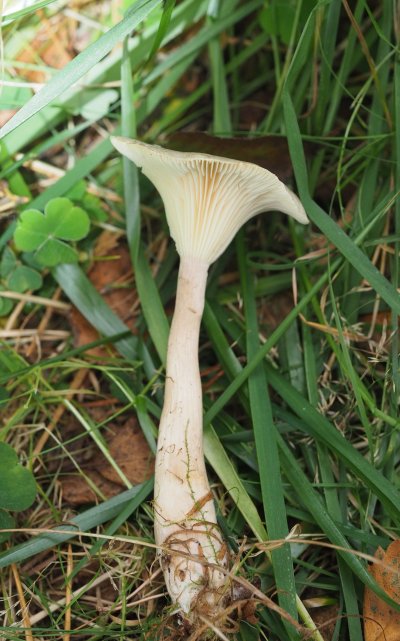 Club Foot |
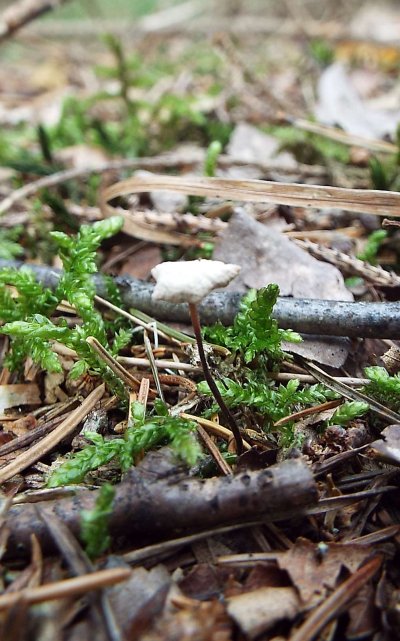 Horsehair Parachute |
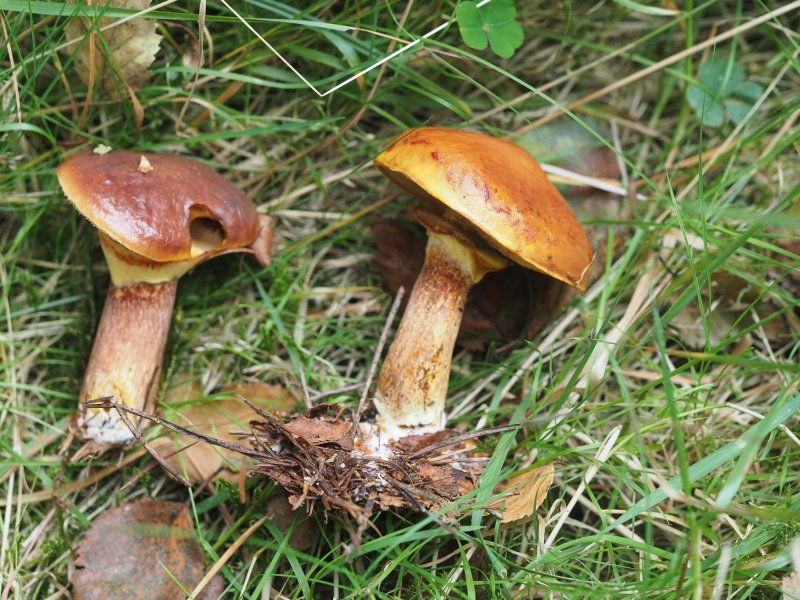
Larch Bolete
To see more please see this album.
Postscript
The weeping fungus we had gaily said was Birch Polypore in the photo above, has turned out to be
something totally different – Xanthoporia radiata – The Alder Bracket (previously known as
Inonotus radiata or Mensularia radiata)!
Gill pointed out the fact that it was “weeping”, which Birch Polypores don’t do, so we needed to look a bit further. Using Angela’s and Jordan’s super photos I was able to locate the specimen 6 weeks later (Dec 10th ), when it had changed a lot! It had dried out, had light reflective pores underneath suggesting and an Inonotus species, and was tiered up the dead but standing trunk of a Birch tree. Oak Polypores – Pseudoinonotus dryadeus – do weep, but are almost always confined to the base of Oak trees. Like our specimen, under the microscope you can see they also have setae (thick walled hairs/spines) on the spore-bearing surface (the Hymenium) but their spores are larger at 6-8 microns long. You can see the setae from our specimen are hooked and the spores were only 5 microns long. This combined with it being tiered on the trunk meant it was not Oak Polypore, but in fact Alder Bracket Xanthoporia radiata, albeit on a less common host. True, most records are from Alder, but the national database CATE2 has 55 records of it on Birch. We know Xanthoporia radiata from Gilling woods on Alder so it is great to have discovered another one on Birch. Ours is now the first record of the species on Birch in our area (VC62) and just shows it often pays to look very closely at these things!!
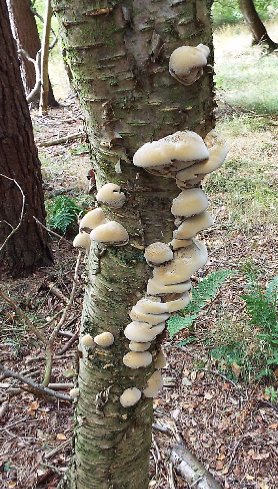 Alder bracket on birch 25 September |
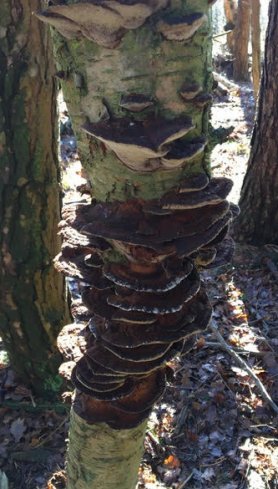 The same specimen on 10 December |
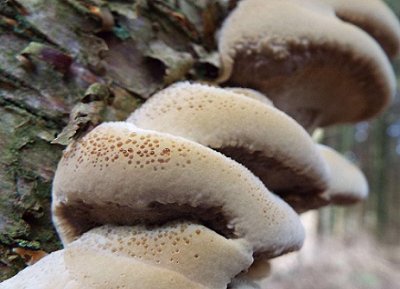 Alder bracket on birch (detail) 25 September |
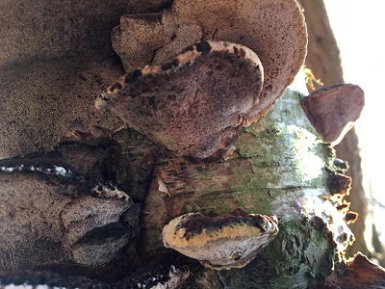 ... and on 10 December |
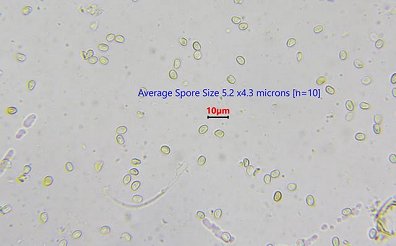 Spores of the Alder bracket through the microscope |
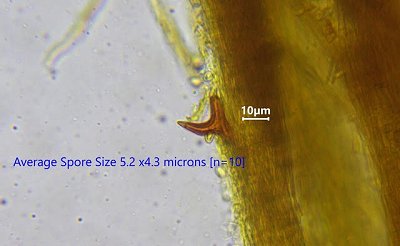 Seta and spores of the Alder bracket through the microscope |
| © Ryedale Natural History Society 2021, Photos © Jordan Protano-Byrne, Angela Clark, Rhona Sutherland 2021. |